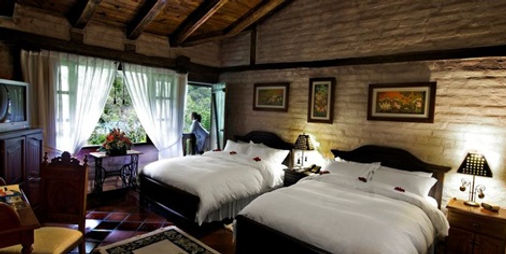THE LLANGANATES-SANGAY
ECOLOGICAL CORRIDOR
ZONE: Subtropical Rainforest
ATRACTIVE: Flora/Fauna –Rivers – Forest – Historical wall
ACTIVITIES: Trekking-Birdwatching -Aventure
ALTITUD: 1800/2000msnm
TEMPERATURE: 20-25 G.
WEATHER CONDITIONS : Variable /Raining /Sunning
DIFFICULTY: Easy/Moderate
INTEREST: High
Its situated between Llanganates and Sangay National Parks, in a region of extremely high biodiversity value, the Andean Cordillera Real Oriental. The corridor is ecologically essential to ensure the connection of the two parks and this mountain range is a hotspot for a number of important species. According to the management plan, 71% of the site is still forested. The predominant forest types include variations of the humid foothill and sub-tropical evergreen forests. The site is known to be home to four globally threatened birds including: Phlegophilus hemileucurus, Galbula pastazae, Dysithamnus occidentalis and Dendroica cerulea. It is also home to the Near Threatened Campylopterus villaviscensio and Aburria aburri. In total, 270 birds species have been recorded from the area. The corridor is also home to 101 mammal species, 48 species of amphibian and 5 species of reptile. 195 endemic species of plants have been described from the watershed of Rio Pastaza, including 91 species of orchid.
THE LLANGANATES-SANGAY
ECOLOGICAL CORRIDOR
BIRDS EASY TO SEE
Galbula pastazae, Rupicola peruviana, Eutoxeres Aquila, Cyanocorax yncas, Sericossypha albocristata, Momotus momota, Trogon personatus, Merganetta armata,Spizaetus isidorii, Uropsalis lyra, Tigrisoma fasciatum, Grallaria gigantea, Turdus fulviventris, Cacicus leucoramphus,Cissopis leveriana, Dendroica cerúlea, Cinclus leucocephalus, Tangara chilensis, Tangara xanthocephala

MAMMALS EASY TO SEE
Lagothrix lagothricha, Cebus albifrons, Choloepus didactylus, Saguinus rufiscens, Lontra longicaudis, Tamandua tetradactyla, Nasua nasua, Eira barbara, mustela frenata, Conepatus semistriatus, Mazama Rufina, Sciurus granatensis, Sciurus flaviventris, Tapirus pinchaque, Tremarctus ornatus.

FOREST AND BOTANY SPECIES EASY TO SEE
Sapoteca acueleata, Spiroteca rimbiachi, Toxicodendrum striatum, Wetinia maynensis, Iriartea deltoidea (Ruiz & Pavòn), Chamaedorea linearis (Ruiz & Pav.) Mart, Wettinia maynensis Spruce, Prestoea acuminata (Willd) H.E. Moore

New species of orchids
New specie Lepanthes mayordomensis.
Photo by
Fundacion Ecominga




New specie Masdevallia Stigii. Photo by Fundacion Ecominga
New subspecie Dracula exasperata
ANPHIBIAN AND REPTILS

New species of frogs
CAMPING, BIOLOGICAL STATION, LODGE




PRICE: USD X PERSON X DAY
INCLUDED
-
Private transport bus-canoe(rainforest)
-
Lodge
-
Three meals x day
-
Naturalist guides
-
All visits
-
Camping equipment-life jackets-roobert boots
Recommended equipment
-
Personal medicine
-
Shorts
-
Mosquito repellant
-
Flashlight, penknife
-
Lighter, binoculars
-
Plastic bags
-
Long pants for hiking
-
Long-sleeved sweater for evenings
-
Light shoes and/or sandals
-
Sun cream or sun block
-
Light-weight clothing
-
Sunglasses and sun hat
-
Towel
-
Biodegradable soap
-
A lot of film and a camera
CONTACT US

Oficinas: Bolìvar 227 y Urbina
Pìllaro - Tungurahua - Ecuador
WEB: www.treasureoftheincas.com
Email: info@parquellanganates.com
Tlfs: 03-2875316 – 0987403376
Internationaly recommended by Ecuador&Galàpagos Handbook
